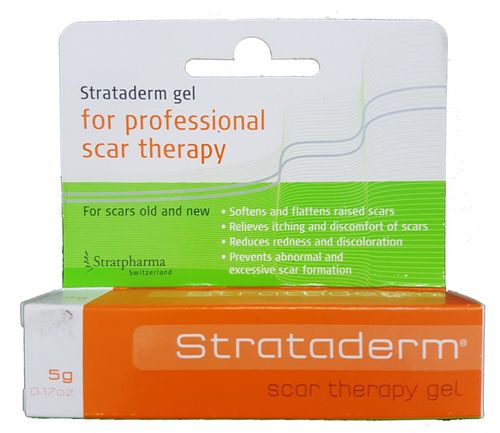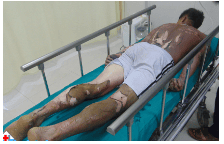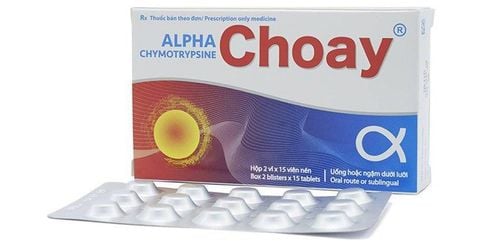This is an automatically translated article.
The article was written by Dr., Dr. Phan Nguyen Thanh Binh, Department of Pediatrics - Neonatology, Vinmec Central Park International General Hospital1. Why do people with severe burns need special nutrition?
When severely burned, the patient's body will have the following important reactions:
1.1 Increase metabolism When suffering a wound, the body has an increase in energy expenditure. The increase in energy expenditure is usually highest in burn wounds.
In the early stages, the need for sugar is met by the hydrolysis of glycogen. When glycogen stores are depleted, fat hydrolysis and protein catabolism will increase to supply sugar to the body. These reactions increase cardiac output, increase oxygen consumption, and increase thermogenesis. Because burns lose the protective layer of skin, there will be increased dehydration, loss of body temperature and loss of local immune function.
The sympathetic axis is stimulated and increases plasma adrenaline, noradrenaline and cortisol, glucagon and insulin.
An increase in metabolism and oxygen consumption is closely related to the breadth and depth of the burns.
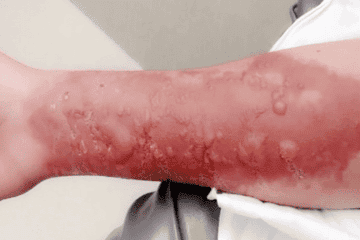
1.2 Catabolic reactions Use amino acids in the muscles to make glucose to meet the body's needs. Muscle mass is reduced due to the use of amino acids to create glucose to meet the body's needs, increasing the production of nitrogen excreted by the kidneys. The degree of nitrogen loss is closely related to the total burn area. Severe nitrogen loss persists for the first 7-10 days then subsides in the weeks after the burn heals.
Active nutritional support is an external source of energy and protein, limiting muscle mass loss, reducing infectious complications, increasing survival rates and reducing hospital stays. The period of active nutritional support must continue until after the wound has healed.
1.3 Inflammatory response There is activation of white blood cells that increase production of cytokines, growth factors and chemotactic factors.
Hypermetabolism at the onset of burns entails a severe protein loss (protein catabolism) for about 10-14 days. Active nutritional support during this period is important to limit the risk of mortality. The increase in metabolism in patients with severe burns is proportional to the severity and extent of the wounds and persists until the majority of the wounds heal.
After this period there is a gradual decrease in metabolic and catabolic processes, the burn heals gradually, and anabolic processes predominate. Nutritional support should also be continued until the patient has passed this stage because the patient needs to have sufficient “raw material” for these anabolic processes.
If we do not meet this increased energy and protein requirement with active nutritional support, the patient's body will find energy in its own muscles. This will lead to patient weight loss, delayed wound healing, skin graft failure (if needed), impaired immune response, infected burns, and increased mortality.
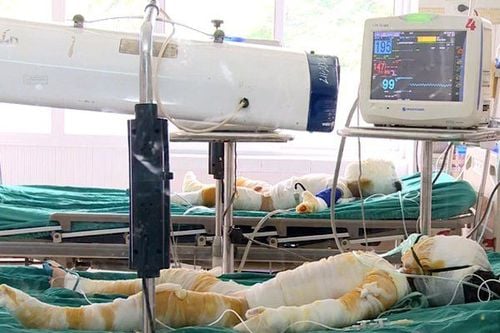
2. Special nutritional needs in patients with severe burns
For minor burns, the diet can be maintained as usual.
Patients with severe burns need to be provided with an energy-rich, protein-rich diet, supplemented with vitamins and minerals in therapeutic doses.
2.1 Energy requirement Energy requirement depends on burn stages as follows:
Burn shock stage:
Energy: 2,100 - 2,300kcal, or determined by formula (25 x body weight (kg) )) + (40 x % burn area)
Protein (g): 70 – 90g (14 – 16% total energy).
Lipids (g): 35 - 50g (15 - 20% of total energy
Glucid (g): 350 - 370g
Of which 75% are ingested through the intestines, 25% are eaten intravenously. , infection and burn burnout:
Energy: 2,900 - 3,000kcal (about 60 - 65kcal /kg/day)
Protein (g): 120 - 140g (16 - 20% of total energy)
Lipid (g) : 50 - 60g (15 - 20% of total energy)
Glucid (g): 400 - 450g
Water 2 - 3 liters/day
Number of meals: 7 - 8 meals/day
Recovery phase burn:
Energy: = 3,300 - 3,500kcal
Protein (g): 170 - 180g (20 - 25% of total energy)
Lipid (g): 100 - 110g (20 - 30% of total energy).
Glucid (g): 450 - 500g
Water 2 - 3 liters/day
Number of meals: 6 - 7 meals/day.
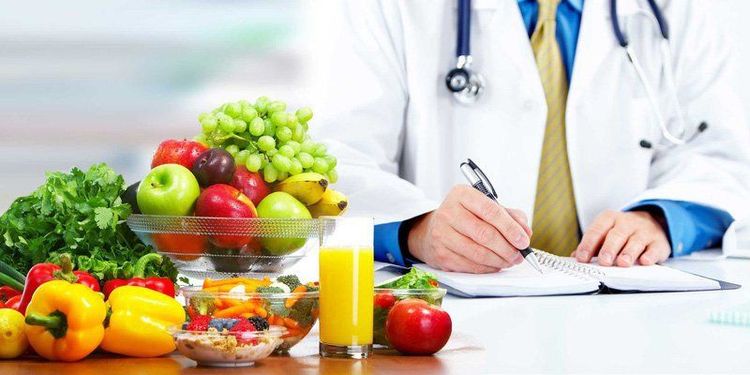
2.2 Protein In severe burn patients, 20-30% of protein loss is in the secretions of burn wounds. Protein-fortified diets (25% of total energy compared to 14-16% of normal diets) play an important role, helping to regenerate connective tissue and fill wounds, increase function. immunity and reduce infection. Protein deficiency results in delayed wound healing, increased susceptibility to infection, and increased scar formation.
Protein has high biological value from animal sources such as pork, beef, chicken, fish, eggs, milk, ... and plant sources such as: soybeans, legumes.
2.3 Fat A diet with 15-20% fat, especially providing adequate requirements for essential fatty acids (eg, omega 3 found in salmon, mackerel, herring...) and other essential fatty acids. fat-soluble vitamins, which have the ability to improve immune function and fight inflammation, reduce infection rates, promote faster skin healing and shorten hospital stays.
2.4 Vitamin C Vitamin C is important for collagen synthesis and also has an antioxidant effect, in addition to actively participating in the production of white blood cells to help fight invading bacteria that cause difficult wound conditions. healing or susceptible to infection. Foods rich in vitamin C such as guava, cherries, oranges, grapefruit, tangerines, tomatoes, sweet potatoes, potatoes, green vegetables,...
For severe burns, vitamin C supplements are needed. supplement 1g/day divided into 2 times. For children under 3 years old, 1⁄2 of this dose can be used.
2.5 Vitamin A Vitamin A helps promote the production of new skin cells to help speed up wound healing, improve immune function, reduce infection, and limit the risk of scarring. Vitamin A is abundant in animal products such as meat, fish, poultry and dairy products. The most common provitamin A is beta-carotene found in watermelon, ripe papaya, persimmon, tangerine, ripe mango, orange,..
For patients over 3 years old with severe burns, 10,000 units should be added. vitamin A every day. For children under 3 years old, give 1/2 of the above dose.
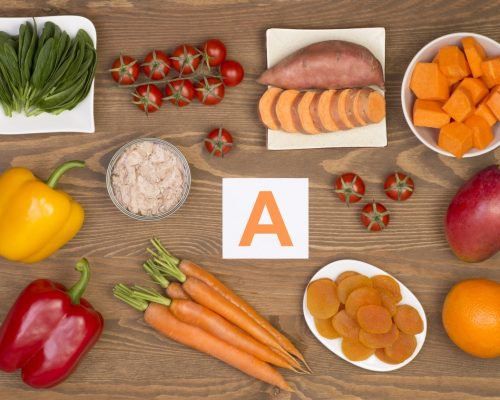
2.6 Minerals Excessive iron supplementation after a burn can be harmful to the patient, even if blood iron levels decrease. In contrast, zinc, copper, manganese, and selenium are essential micronutrients for scar healing. Zinc helps strengthen immunity and regenerate cells, concentrated in seafood, shrimp, crab, snails, oysters, clams, pumpkin and pumpkin seeds. A daily zinc supplement should be given to all patients with severe burns.
Other note
Burn patients need to pay attention to drink plenty of water daily. If you drink less water, the burned skin tends to dry out, taking longer to heal. In case of poor diet, you can drink more high-energy milk 2-3 glasses a day to provide more energy as well as necessary nutrients to help heal burns. Patients should also rest and get enough sleep because the damaged skin will recover while sleeping. Confectionery, bacon, alcohol, and coffee should be avoided because they can cause loss of vitamins, minerals, water and electrolyte disturbances while the burn is in dire need of water. When taking care of patients with severe burns, you should consult your doctor for an appropriate diet. Vinmec International General Hospital is a high-quality medical facility in Vietnam with a team of highly qualified medical professionals, well-trained, domestic and foreign, and experienced.
A system of modern and advanced medical equipment, possessing many of the best machines in the world, helping to detect many difficult and dangerous diseases in a short time, supporting the diagnosis and treatment of doctors the most effective. The hospital space is designed according to 5-star hotel standards, giving patients comfort, friendliness and peace of mind.
Please dial HOTLINE for more information or register for an appointment HERE. Download MyVinmec app to make appointments faster and to manage your bookings easily.





